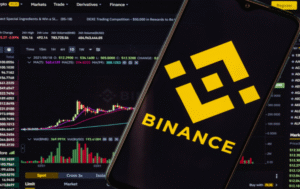$BTC $ETH $MSTR
#Bitcoin #Crypto #Hodl #StrategicReserve #Blockchain #Cryptocurrency #Finance #FederalReserve #Investment #Resilience #DigitalAssets #MarketAnalysis
The notion of creating a Bitcoin strategic reserve may seem appealing at first glance, particularly to staunch proponents—or “hodlers”—who view the cryptocurrency as a safeguard against inflation and economic instability. However, this idea, while innovative, is based more on speculative zeal and hope rather than practical financial or economic rationale. Unlike traditional reserves such as gold, Bitcoin remains an asset plagued by extreme volatility and limited acceptance as a stable reference of value. While gold has a centuries-long track record as a store of value, Bitcoin is still in its formative years, susceptible to regulatory crackdowns, fragmented liquidity, and fears of obsolescence due to technological advancements. These factors create a significant barrier to Bitcoin being adopted in serious strategic applications by institutions like the US government.
For individual and corporate hodlers like MicroStrategy, which famously holds billions in Bitcoin, the idea of a “strategic reserve” aligns with their investment case for the asset as “digital gold.” Advocates argue that Bitcoin’s finite supply, combined with increasing institutional adoption, supports its case for long-term appreciation. Yet, the term “strategic reserve” overlooks the vital need for any reserve asset to maintain stability during crises. In contrast, Bitcoin’s price movements have shown it often correlates negatively with broader risk sentiment, rising spectacularly during speculative euphoria but plummeting sharply during equity market corrections or liquidity constraints. For these reasons, while some corporations may diversify reserves into Bitcoin, it is far from a practical instrument for national-level financial resilience.
The complexities grow when extending such theories to the realm of public finance or central banks. One critical role of any reserve asset is its ability to provide liquidity and stability during economic turbulence. The US dollar, alongside US Treasuries, has retained its preeminent role globally because of its deep liquidity and stability over decades. Bitcoin, on the other hand, has yet to prove it can withstand the shocks of a global market crisis. Moreover, heavy adoption of Bitcoin in any state’s reserves might distort its market dynamics severely. The sheer volume of Bitcoin needed for government reserves could cause unnatural price spikes, followed by extreme volatility, undermining its functionality as a stable reserve. This would exacerbate concerns about its inherent speculative attributes.
In essence, while the concept of a Bitcoin strategic reserve resonates with aspirations for decentralized financial systems, it misaligns with the framework used for building resilience in complex financial systems. Bitcoin might remain an investment vehicle or speculative asset for individuals, corporations, and even smaller nation-states, but as a national reserve asset for a global economic superpower like the US, its merits are deeply questionable. Without substantial maturity in regulatory oversight, sharp reductions in volatility, and greater global acceptance, Bitcoin’s positioning as a reserve asset will remain more of a hopeful experiment than a grounded strategy. The real challenge lies in balancing innovation with pragmatic financial governance, a line currently too fine for Bitcoin to tread in this context.











Comments are closed.